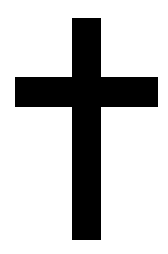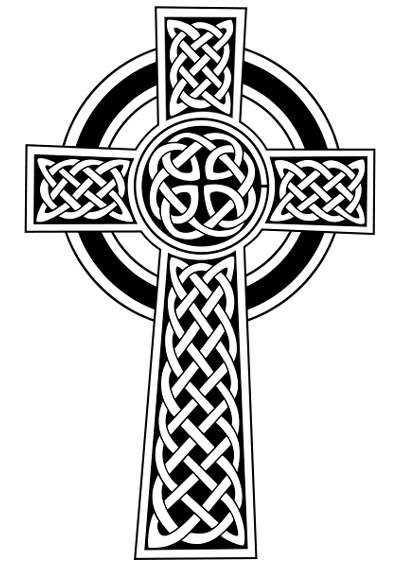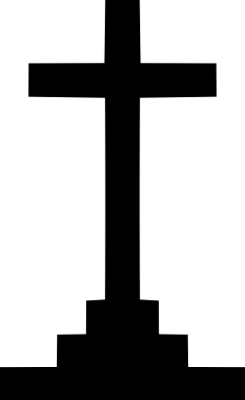In General
The Death and Resurrection of Jesus is the central aspect of the Christian and Catholic faith. Without this sacrifice, there would be no Catholic faith. In the Roman times, crucifixion was the worst type of execution possible and a sign of disgrace. While there is no denying that it is a terrible and very painful way to die, the sacred death of Christ on the cross has made it less of a disgrace and a symbol of His great love for us. Through His death, he turned it from a shameful way to die to the ultimate demonstration of love and an example of the lengths of love and sacrifice to which every one of his followers should be willing to go. It is thus that all Christians proudly wear and display the cross as a symbol of their faith and a reminder of this seminal event.
Catholics are unique in that they also portray the body of Christ on the cross, as opposed to just a plain cross, which may other Christians prefer. Some people might think that it is unnecessary or imprudent to portray Christ dying on the cross because He has already risen, and the cross alone is a sufficient reminder of His sacrifice. Catholics like to put the body of Christ on the cross because it serves as a more visual reminder of the sacrifice. They are not denying the Resurrection or trying to downplay it, but rather are emphasizing that Christ's death did require great suffering. Christ's death without His resurrection or His resurrection without His death are both useless, and so to try to separate one from the other is to ignore the necessity of both and to oversimplify the matter. By putting the body on the cross, Catholics are acknowledging in a very real way that the sacrifice of Christ was not easy and required great love. Looking at a cross alone is useful, but looking at the suffering Christ hammers home the point so much better, and really demonstrates the great amount of love that was required.

Latin Cross
This is a very basic cross and the one you will most commonly see. It is the one that is in every Catholic Church and that most people wear around their neck. It is called the Latin Cross to distinguish it from the Greek Cross. The Latin Cross has the horizontal beam positioned towards the top of the vertical beam, whereas the Greek Cross has the horizontal beam positioned in the middle of the vertical beam, creating four equal lengths of wood. This is almost certainly the type of cross the Romans would have used to crucify Jesus.

Celtic Cross
The Celtic Cross originated in Ireland and became very popular there and in Britain. Its design is a regular, Latin cross (see above) with a circle where the horizontal and vertical beam intersect. Legend has it that St. Patrick fashioned this cross in Ireland in order to teach the pagans about Christ. He combined a regular cross with a circle representing the Sun, so that this powerful Christian symbol would become linked in the minds of the pagans with the power of the Sun, which was an important part of their religion. It has become more popular recently with a renewed interest in Irish culture.

Papal Cross/Bent Log Cross
This cross was commissioned by Pope Paul VI and used by him and every successive pope. It is in the style of a Latin cross (see above), but the horizontal beam is bent downwards. This is to symbolize the weight of all sins which Christ bore with Him on the cross. This is a very useful and pious reminder, as well as being a reminder of the most recent popes and their work.
St. Benedict Medal Cross
The St. Benedict Medal Cross is a normal cross, but behind Christ's head, at the intersection of the horizontal and vertical beams, is a St. Benedict Medal. The St. Benedict Medal is commonly worn by persons to ward off the devil. On it is inscribed several prayers. On the front of the medal, it reads "May we be strengthened by his presence in the hour of our death." On the back of the medal are two prayers. "May the holy cross be my light! May the dragon never be my overlord!" "Begone Satan! Never tempt me with your vanities! What you offer me is evil. Drink the poison yourself!" This cross is wonderful as a combination of these two powerful Catholic sacramentals and prayers.
San Damiano Cross
This is the cross in the church where St. Francis received his vision to go and repair the Church. It is a very ornate and unusual cross. It is somewhat tiered on the bottom portion. Besides the body of Christ, there are many other depictions. Mary, John the Evangelist, Mary Magdalene and the others present at the foot of the Cross are all depicted. At the top of the Cross, above Jesus' head, is a small figure of Jesus rising from the dead, with angels surrounding Him, and the hand of God the Father above Him. This cross is particularly popular with Franciscans.


Comfort Cross
The comfort cross has rounded edges, so that it is more comfortable to hold in one's hands, particularly during prayer. It is also known as the holding cross. They are often made of olive wood from the Holy Land.

Byzantine Cross
The Orthodox cross is very unique, and has a long history in the Eastern Church. It has three horizontal bars, as opposed to the one that we are accustomed to seeing. The middle and longest horizontal bar is where Christ's hands were during His crucifixion, just as in a regular cross. The small beam above that is for the inscription that Pilate placed above His head, "Jesus of Nazareth, King of the Jews". The beam near the bottom, the one that is slanted, is the most interesting. It is there as the footrest for Christ. However, its slant has great symbolism. The right is slanted towards Heaven, and the left towards Hell. Not only does this remind us of the ultimate fate of mankind, but it reminds us of the good and bad thieves, crucified on either side of Christ. The good thief on the right went to Heaven, while the other on the left went to Hell.

Tau Cross
Tau is a Greek letter, and it also happens to be generally in the shape of a cross, albeit without the upper part of the vertical beam. St. Francis particarly loved this version of the Cross. It derives part of its symbolism from the book of Ezekiel in the Old Testament, in which God decreed that those who were living a holy life be marked with a tau on their foreheads. Thus it was also a symbol of holiness, as well as being a reminder of Christ's death.

Anchor Cross
This is a mix between an anchor and a cross. It reminds us that Jesus is the anchor of the Catholic Faith and that remaining close to Him is necessary and the best assurance of salvation. It was particularly used in the early church as a sign of hope and assurance that Jesus is an anchor in the face of so much persection.

Graded/Calvary Cross
This is a simple cross that is perched on top of three steps. The three steps can represent the hill of Calvary, on which Jesus died. They can also represent the three theological virtues of Faith, Hope and Charity. These steps remind us that it takes work to get to the point that one can sacrifice oneself totally.

Budded Cross
This cross incorporates a budding flower on the end of each beam of the cross. The buds look very similar to shamrocks, with three pedals. They can remind us of the Trinity and of the mystery of Jesus' death on the cross.

Fleur de Lis Cross
This is a cross with a fleur-de-lis at the end of each beam. It is very similar to the budded cross. Like that cross, it reminds us of the Holy Trinity, with its three pedals, and of Jesus' sacrifice on the cross.

Jerusalem Cross
This cross is unique, because it has four smaller crosses in each of the four quadrants created by the larger, center cross. It is called the Jerusalem cross because it was first used by the crusaders in their attacks on Jerusalem. It is not exactly clear what the four smaller crosses stand for, but there are several possible meanings to draw from it. First, they could represent the four evangelists. Second, they could remind us that the gospel is to be preached in the four corners of the world. Finally, the five crosses together could be a reminder of the five wounds of Jesus.

Maltese Cross
The Maltese Cross is associated with the island of Malta and the Order of Malta which defended that island in the 16th century. The Order of Malta was a religious order of knights dedicated to defending Europe from the invading Muslims. Malta was their home base. The eight points of the cross represent the eight areas of Europe from which the knights came as well as the eight promises made by each knight.

Papal Cross
This unique cross was reserved for use by the pope, but it is not often used by them today. Instead of one horizontal beam, it has three, getting progressively shorter towards the top of the vertical beam. It probably originated in the middle ages from heraldry and coat of arms. The three horizontal beams are often viewed as depicting the three crosses on Calvary, those of Jesus and the two thieves.

Patriarchal Cross
This cross is called the patriarchal cross because it is often seen in paintings of the Old Testament patriarchs. It has two horizontal beams. The higher, smaller one is for the INRI inscription that was above Jesus' head. The larger, lower one is where Jesus' arms were placed. This cross was also sometimes used by archbishops in the same way as the papal cross.
